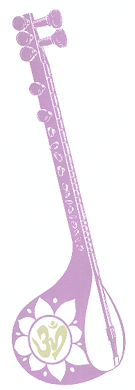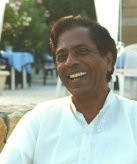
Indian Classical Music - Raga Music
Sound therapy has its roots in the ancient sacred music of India
A Brief History and Description by Roop Verma, World Class Master Sitarist

Roop Verma
Indian Classical Music originated in the ancient Vedic times. The four Vedas (Rig, Yajur, Sama and Atharva) are the Indian sacred books of knowledge from antiquity. Although the knowledge was in written form, to protect its purity, it was first transmitted orally to a select few. In earlier times, people chanted hymns of the Vedas in religious ceremonies, rites and rituals and sang about the glory of the Gods. These practices were very instrumental in strengthening the religious feelings of the people and arousing their creativity through singing and dancing.
Over the millenniums, Indian Classical Music underwent many phases of development before it was classified into its present form. It began with one note, and gradually expanded to three notes, seven notes, twelve notes, 22 and finally 66 smaller units of sound (microtones), which evolved into the present 72 scale principle. The intervals of tones thus derived were based on the natural laws of harmony and were minutely observed for their interactions with other tones and their effects on the human mind. Such observations and research gave rise to a musical system that recognizes and practices music not only as an art form, but as a psycho-physiological process of transformation.
Indian Classical Music is uniquely equipped with melodic forms called "Ragas," through which the artist expresses different moods. "Raga" means melody. It is the very heart of Indian Classical Music, the melodic form in which the artist improvises and expresses, in almost infinite ways, different sentiments and moods.
The theme of a Raga is expanded through a complex process of micro-tonal coloration, ornamentation of notes and intricate rhythms. Purity of intonation is extremely important to maintain the spiritual and emotional contents of a Raga so as to access the inner layers of the listener's mind.
What is so fascinating about music based on ragas is that it creates sounds closer to nature. A Raga has two important notes in each tetrachord (half octave). These two notes are highlighted in a specific manner, along with their interplay with the other notes and the basic tonic note, to create the essential mood of the Raga. Each Raga has a specific ascending and descending pattern and characteristic phrase, which help establish the basic structure of its theme before it is improvised upon.
Improvisation plays the most vital role in the elaboration of a Raga, always enhancing the mood, and then striving to fulfill and resolve it. Improvisation is like composing in front of the audience, and it is therefore very fresh and lively, just like life, and provides many possibilities for a truly creative artist.
Indian classical music concerts usually consist of small ensembles of musicians; a principle singer or instrumentalist accompanied by Tabla (drum) and Tamboura (drone instrument) players. The artist improvises within the structure of the Raga, starting with a slow introduction and progressing to dynamic and energetic improvisation that develops the mood of the Raga to a level of great musical ecstasy.
